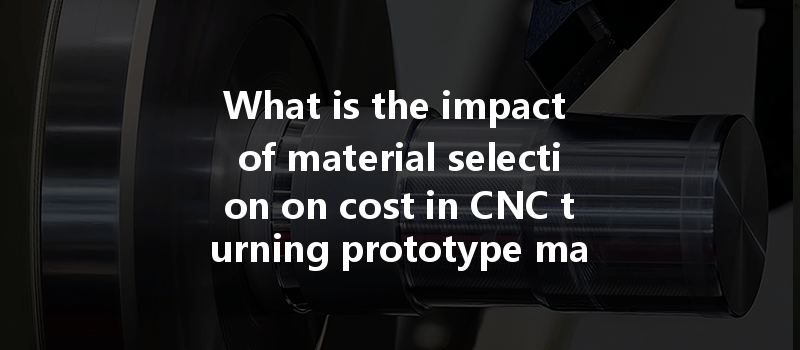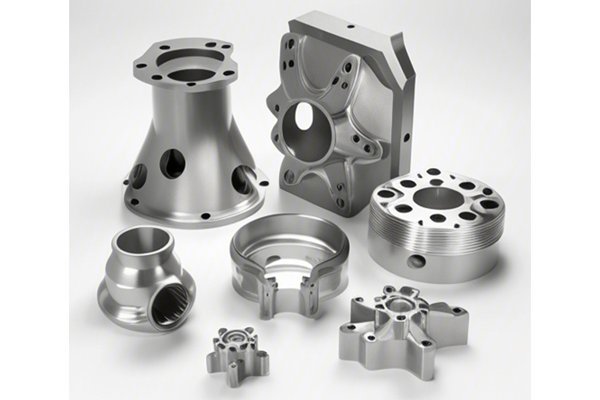Did you know that material selection can account for up to 70% of the total cost in high-precision CNC (Computer Numerical Control) machining processes? This staggering statistic highlights the significance of making informed choices when it comes to materials in CNC turning prototype machining. Selecting the right material not only influences cost but also affects the performance, durability, and functionality of the final product. This article dives deep into how material selection impacts costs in CNC turning, providing insights and strategies to optimize your machining projects.
Understanding CNC Turning Prototype Machining
CNC turning is a subtractive manufacturing process that uses a CNC lathe to remove material from a rotating workpiece to achieve the desired shape and dimensions. Prototype machining specifically involves creating sample parts to test design specifications or assess mechanical characteristics before mass production. The choice of material is vital, as it determines not only the cost but also the feasibility of the project.
The Cost Factors in CNC Turning
When evaluating the cost of CNC machining, several key factors must be considered:
The Role of Material Selection
Each material comes with its own set of properties—strength, weight, durability, and machinability—all of which affect the performance and cost of the final product. Understanding how these properties interact is crucial for effective material selection.
The global demand and supply dynamics also significantly influence the cost of raw materials. In times of high demand or limited supply, prices can surge, impacting the project budget. Keeping an eye on market trends enables better material planning and cost management.
Evaluating the Right Material for CNC Turning
Here’s how to evaluate which material is best suited for your CNC turning prototypes:
Begin by outlining the specifications for your prototype. Consider factors such as weight, strength, temperature resistance, and exposure to chemicals. This assessment helps narrow the list of suitable materials.

Evaluate the machinability of potential materials against your cost requirements. Use resources such as machinability rating charts to compare different materials’ ease of machining.
Perform a cost-benefit analysis weighing the material’s advantages against its costs. A more expensive material might lead to a superior product that can justify its use in the long run.
If unsure, consulting with material suppliers and engineering experts can provide insights based on real-world experience. They can offer advice on material performance, supply chain considerations, and alternative options.
Case Study: Material Selection in Action
Consider a prototype project for an aerospace component requiring high strength-to-weight ratios. The initial choice was A36 carbon steel, which looked cost-effective but had several drawbacks:
After reevaluating the material selection process, the team opted for 7075 aluminum alloy. This heavier initial investment resulted in lower machining times, reduced tool wear, and the final product met all specifications with additional weight allowances.
Cost Optimization Techniques in CNC Turning
Implementing design for manufacturability (DFM) principles can lead to significant cost reductions. Streamlined designs can minimize the amount of material wasted, reduce machining time, and simplify assembly.
Grouping similar materials and employing standard sizes can optimize the procurement process. Bulk purchasing can help negotiate better prices and minimize handling costs.
Investing in high-quality, specialized tooling can improve machining efficiency and tool life, mitigating long-term costs. For example, using carbide tooling for hard materials incurs higher upfront costs but saves on replacements and downtime.
The impact of material selection on cost in CNC turning prototype machining is profound; it influences everything from initial purchasing to machining speed and post-processing needs. Understanding the properties, costs, and implications of material choices allows for informed decision-making, leading to cost reductions and enhanced product performance.
As you move forward in your CNC turning projects, keep in mind the importance of a careful material selection process. By doing so, you’ll not only manage your costs but also improve the reliability and success of your prototypes. So, ask yourself: Are you making the most out of your material choices?
In the world of CNC machining, these choices can set the difference between a successful prototype and one that fails to meet expectations. Therefore, leverage this knowledge wisely to ensure your projects remain both cost-effective and performance-driven.






